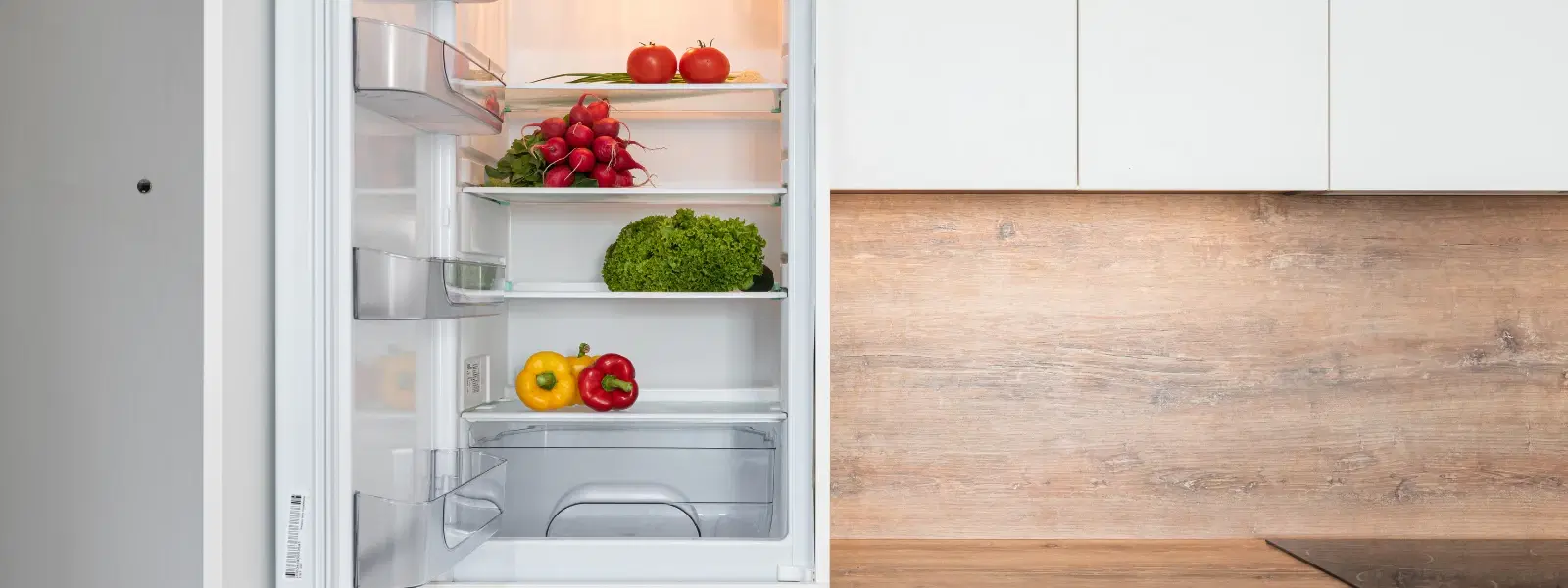
Home Appliances
•04 min read

Ever wondered how much electricity your 250 litre fridge consumes daily, monthly, or even yearly? Understanding your fridge's power consumption can not only help you save money but also help you make energy-efficient choices for a sustainable home. In this guide, you will learn how to calculate your fridge's electricity consumption, what factors influence its energy usage, and some handy tips to optimize its efficiency.
Power consumption refers to the amount of electricity used by an appliance, typically measured in watts (W) or kilowatt-hours (kWh). For your 250 litre fridge, knowing its electricity consumption is essential in keeping your electricity bills low while ensuring efficient use of your appliance. On average, a fridge's wattage along with the number of hours it operates determines its monthly and yearly cost.
There are several factors that can affect the electricity consumption of a 250 litre fridge. These include the appliance’s size, its energy rating, how frequently the door is opened, and even the ambient temperature around the fridge. For example, a fridge operating in a warmer climate or placed in a room without proper ventilation might work harder, resulting in higher energy consumption. Understanding these factors is key to making informed decisions about managing your energy usage.
The calculation itself is straightforward. The basic formula for determining your fridge's power consumption is:
Power Consumption (kWh) = Wattage × Hours Used ÷ 1000
First, check the label or user manual of your 250 litre fridge to find its wattage. Then multiply this wattage by the number of hours in a day (or any desired period) and divide by 1000 to convert watts to kilowatt-hours. For instance, if your fridge is rated at 150 watts and operates continuously for 24 hours, the daily consumption would be calculated as (150 × 24) ÷ 1000, which equals 3.6 kWh per day.
For those who prefer a more effortless method, numerous online calculators are available. By simply entering the wattage and operating hours, these calculators quickly estimate the electricity consumption of your fridge. They are a great way to get an accurate result without the need for manual calculations.
(22)-ce7ceead-ac3a-4afb-a49c-dac5daf096f3.png&w=3840&q=75)
Fridge energy ratings, often given in star ratings, indicate how efficiently a refrigerator uses electricity. A higher energy rating means the fridge operates more efficiently, consuming less electricity, and thereby saving on long-term electricity costs. When you consider a 250 litre fridge, a higher star rating not only reduces the electricity consumption of the fridge but also benefits your monthly electricity bill.
While shopping for a new fridge, look for models that are equipped with inverter technology and smart cooling systems. These features not only enhance overall performance but can also contribute to lower energy consumption. Remember, opting for a more energy-efficient appliance can lead to noticeable savings in the long run.
There are several practical energy-saving methods to reduce the electricity consumption of your fridge. First, maintain proper temperature settings; an overly cold fridge can waste energy. Avoid overloading the fridge as this restricts air circulation, causing the appliance to work harder. Regular maintenance, including cleaning the condenser coils and ensuring proper ventilation, can also enhance the fridge’s efficiency. Such energy-saving fridge tips not only extend the lifespan of your appliance but also reduce running costs.
Using power-efficient home appliances comes with significant benefits. They typically cost less to operate, have a longer lifespan, and contribute to a reduced environmental footprint. Embracing energy efficiency helps in achieving long-term savings while also supporting sustainable living practices.
Did You Know?
Most modern 250 litre fridges consume between 100 and 300 watts per hour depending on their energy rating and features. Choosing a fridge with a higher energy rating can reduce power consumption by up to 30% annually.
Once you know your fridge’s power consumption, you might be wondering about its cost implications. The cost can be calculated using the following formula:
Cost = Power Consumption (kWh) × Electricity Rate
(23)-ddf733c5-2bdd-405f-bb61-df41166a2f1a.png&w=3840&q=75)
For example, if your 250 litre fridge uses 3.6 kWh per day and the electricity rate is ₹7 per kWh, the daily cost comes out to be approximately ₹25.20. Multiply this by 30 to estimate your monthly expenditure, and you have a clear idea of the financial impact.
While a 250 litre fridge can be reasonably efficient, it's interesting to note that smaller or larger refrigerators might consume more or less electricity depending on their wattage and design. Generally, the balance between capacity and energy efficiency is key to reducing your monthly electricity expenses.
The wattage typically ranges from 100 to 300 watts depending on the model and energy efficiency rating.
Use the formula: Power Consumption (kWh) = Wattage × Hours Used ÷ 1000. Multiplying this result by your local electricity rate gives you an estimate of the cost.
A typical 250 litre fridge uses between 1 and 2 kWh per day, though this can vary with usage patterns and energy ratings.
Yes, energy-efficient fridges not only reduce electricity consumption but also help lower long-term costs and contribute to a healthier environment.
Calculating and optimising the 250 litre fridge power consumption ensures you have a proper understanding of your appliance's energy needs. This not only leads to cost savings over time but also aids in reducing your household's overall energy footprint. With a few adjustments in usage habits and regular maintenance, you can significantly boost the fridge energy efficiency while enjoying the long-term benefits of reduced electricity consumption. Keeping your home appliances power efficient is a smart move, aligning with a lifestyle that values both convenience and sustainability.
Remember, every small saving contributes to a larger sustainable living goal. Armed with these practical insights, you can confidently manage your electricity consumption and make better-informed decisions for a more energy-efficient home.